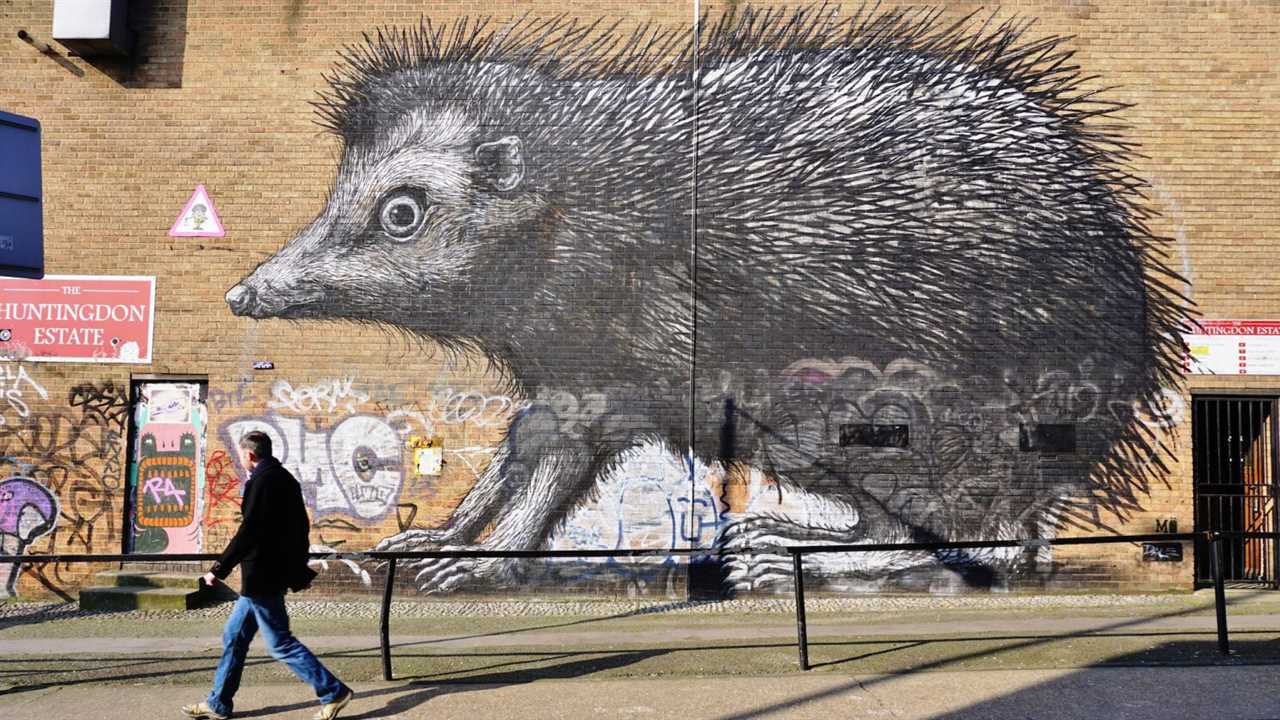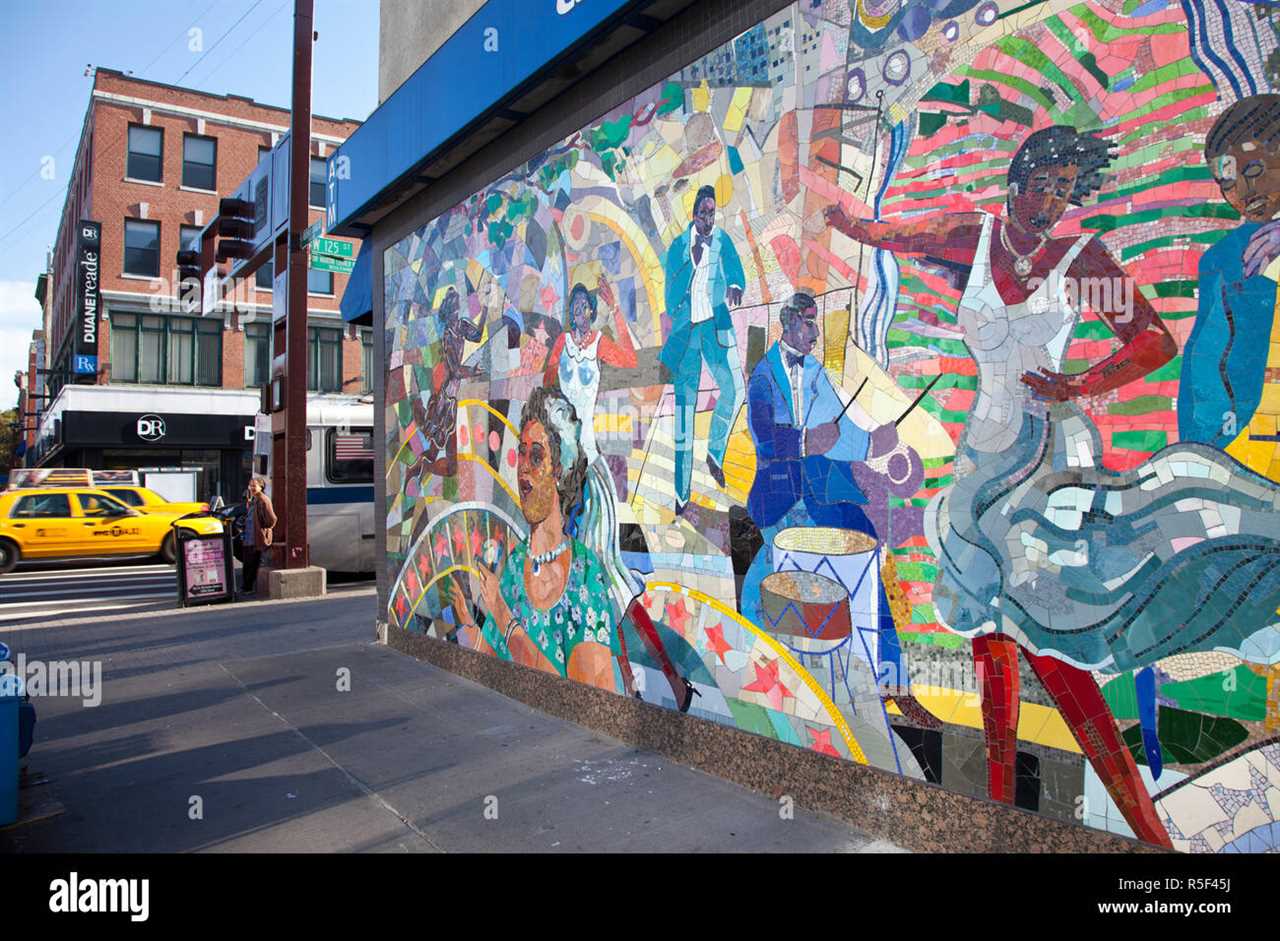
Located in the heart of New York City, Harlem has long been a vibrant hub of creativity and cultural expression. From its beginnings as a center for African American art and music during the Harlem Renaissance, to its present-day status as a thriving urban neighborhood, Harlem continues to inspire and captivate artists from all walks of life.
One of the most distinctive forms of artistic expression in Harlem is its street art. Colorful murals adorn the walls of buildings, turning the streets into an open-air gallery that embraces the spirit and diversity of the community. These murals, often large in scale and bold in design, are a testament to the rich history and ongoing creativity of Harlem.
Contemporary urban art has found a home in Harlem, with local and international artists coming together to contribute to the ever-changing landscape of street art. From abstract designs and geometric patterns to portraits and social commentary, the murals in Harlem reflect the eclectic range of styles and subjects that define urban art today.
Whether it’s a homage to a historical figure, a celebration of community identity, or a statement on social justice issues, each mural tells a unique story and adds to the rich tapestry of Harlem’s artistic heritage. The vibrant colors and striking imagery draw in both locals and tourists, creating a sense of pride and wonder in the neighborhood’s artistic legacy.
As you explore the streets of Harlem, allow yourself to be immersed in the world of colorful murals that line the sidewalks and alleyways. Take a moment to appreciate the talent and creativity on display, and to recognize the power of art to connect people, spark conversation, and transform urban spaces into dynamic and engaging environments.
The Rise of Harlem Street Art
Harlem, a historically rich neighborhood in New York City, has witnessed a significant rise in street art over the past couple of decades. What was once a neglected and run-down area has now become a vibrant hub of artistic expression.
A Cultural Revival
In the early 20th century, Harlem became a cultural mecca for African Americans during the Harlem Renaissance. This period saw a flourishing of art, music, and literature, reflecting the rich heritage and experiences of the Black community. Today, Harlem street art continues to honor this cultural legacy, using vibrant colors and powerful imagery to convey messages of resilience and pride.
A Platform for Expression
Street art has provided a means for local artists to voice their thoughts and emotions in a public space. Walls and buildings throughout Harlem have become blank canvases for creative individuals to showcase their talent and engage with the community.
Harlem street art often incorporates themes of social justice, identity, and community empowerment. Artists use their work to challenge societal norms, fight against inequality, and celebrate the diversity and strength of Harlem’s residents.
The murals and graffiti found in Harlem depict a wide range of subjects, from portraits of influential figures like Malcolm X and Martin Luther King Jr., to representations of everyday life in the neighborhood. Each piece tells a story and adds to the vibrant tapestry of the community.
An Open-Air Gallery

Harlem street art is not limited to just one style or medium. It encompasses a variety of artistic techniques, including stencil art, wheat-pasting, and freehand painting. Artists take inspiration from various sources, including pop culture, history, and personal experiences.
The streets of Harlem have become an open-air gallery, where people can enjoy and interact with art on a daily basis. Murals and graffiti brighten up the concrete landscape, adding color, beauty, and thought-provoking messages to the busy streets.
| Advantages of Harlem Street Art | Challenges Faced |
|---|---|
| 1. Cultural revitalization | 1. Legal issues |
| 2. Community engagement | 2. Maintenance and preservation |
| 3. Platform for marginalized voices | 3. Misunderstandings and misinterpretation |
Overall, Harlem street art has become an integral part of the neighborhood’s identity and a symbol of its resilience and creativity. It serves as a visual representation of the community’s history, struggles, and aspirations, and continues to inspire and unite people from all walks of life.
The Artistic Techniques and Mediums
Harlem street art showcases a wide range of artistic techniques and mediums that contribute to the vibrancy and beauty of the neighborhood’s murals. Artists in Harlem incorporate a variety of styles and methods to bring their visions to life.
1. Spray Paint
Spray paint is one of the most commonly used mediums in Harlem street art. It allows artists to create vibrant, bold, and intricate designs on large-scale surfaces. The use of different nozzle sizes and techniques such as stenciling and layering adds depth and dimension to the artwork.
2. Acrylic Paint

Acrylic paint is another popular choice among Harlem street artists. This medium provides a wide range of colors and dries quickly, allowing artists to work efficiently. It can be applied using brushes, sponges, or even fingers, giving artists the freedom to experiment with different textures and styles.
3. Wheatpaste
Wheatpaste is a technique where artists create their designs on paper and then adhere them to walls or other surfaces using a mixture of wheat flour and water. This method allows for the creation of intricate artworks that can withstand the elements. Wheatpaste murals often have a collage-like appearance and can feature images, text, or a combination of both.
4. Mosaic
Mosaic is an ancient technique that involves creating artworks by assembling small pieces of glass, ceramic, or other materials into a larger design. Harlem street artists incorporate mosaic elements into their murals to add texture, depth, and visual interest. This technique often requires careful planning and precision to create intricate patterns and designs.
5. Digital Art
With the advancement of technology, many street artists in Harlem are embracing digital art as a medium. Using digital tools, artists can create designs on their computers and then transfer them onto walls or other surfaces. This allows for greater precision and the ability to experiment with colors, textures, and effects that may be difficult to achieve with traditional mediums.
Overall, the artistic techniques and mediums used in Harlem street art contribute to its unique and vibrant character. From spray paint to wheatpaste and digital art, these techniques allow artists to express their creativity and make a lasting impact on the urban landscape.
Impact on the Community
The vibrant and colorful murals that adorn the streets of Harlem have had a significant impact on the local community. These murals serve as a powerful form of expression, bringing life and beauty to otherwise neglected urban spaces. They help to create a sense of identity and pride among the residents of Harlem, as well as attracting visitors from all over the city.
By showcasing the talents of local artists, these murals provide an opportunity for them to gain recognition and support. This can lead to increased opportunities for artists to showcase their work and potentially make a living from their craft. It also helps to foster a strong sense of community among artists, as they collaborate and support one another in their creative endeavors.
The presence of these murals also has a positive economic impact on the community. They attract tourists and art enthusiasts who come to admire and photograph the artwork. This influx of visitors can lead to increased foot traffic and business for local shops and restaurants. It helps to revitalize the neighborhood, making it a more vibrant and desirable place to live and visit.
Furthermore, the murals serve as a form of social commentary, addressing important issues and sparking conversations within the community. They can raise awareness about social and political issues, as well as celebrating the rich cultural heritage of Harlem. By engaging the community in dialogue, these murals can inspire positive change and foster a sense of unity among residents.

I am a mural enthusiast and a fervent admirer of street art. Rather than creating murals myself, I am passionate about collecting them. My love for street art knows no bounds. I am dedicated to curating and cherishing these artworks that grace the streets. My collection stands as a testament to my profound appreciation for this form of artistic expression.
read about me



